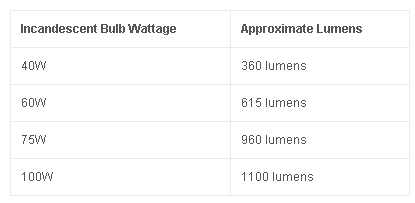The most basic thing you’ve got to know about going green is how to select an energy efficient bulb.
Here we provide essential details of each light source.
LEDs are incredibly energy efficient, have long rated lives, are dimmable, generate little heat and are very small in size
Light emitting diodes (LEDs)are the latest technology in the lighting world. Since LEDs are such a new technology, shop carefully.
Like fluorescent lights, you’ll want to take a close look at the color rendering index (CRI) and the color temperature of any LED.
- Color rendering index is a measure of any light source’s ability to render colors accurately. You want a CRI of at least 80.
- Color temperature, which is measured in kelvins, gives you an idea of what the light will actually look like. The higher the number, the bluer the light source. Incandescent light is around 2700K-3000K. That color temperature in an LED typically looks very natural in the home. Avoid LEDs that are much above 4000K unless you prefer the look of a very “cool” light. Do not buy an LED that is much above 4000K for your home.
Use lumen output to choose a LED
Some LEDs on the market claim to be incredibly efficient and they are, in that they use very little energy. However, it’s no use replacing inefficient incandescents with LEDs if you mistakenly select an LED that doesn’t emit enough light.
Most people judge light output by watts (energy consumption); but for energy efficient sources, this is an inadequate measure. What you’re really looking for is lumens (light output).
Use this chart to figure out how many lumens you’ll need in an energy efficient light:
Fluorescent light is one of the most efficient lighting sources.
For the minimal amount of energy consumed, fluorescent lights give off a surprising amount of light output. And if the word “fluorescent” makes you think of unpleasant, slightly blue office lights, think again. Fluorescent lighting has come a long way since it was invented in the 1930s.
Fluorescent lamps typically are available in “warm white,” “neutral white,” “cool white” and “daylight.” Most people prefer “warm white” for the home, as this is most similar to the familiar yellowish glow of the incandescent light.
- If you’re buying fluorescent light bulbs for your home, find bulbs with a color rendering index greater than 80 and a color temperature of 3000K or less.
- Also, select fixtures with instant start electronic ballasts to make sure you have a light that will turn on without flickering. Instant start electronic ballasts will also prevent you from ending up with a fixture that emits an annoying humming sound.
Incandescent light is the least energy efficient lighting.
In fact, California has already phased out the 100 watt incandescent bulb in an effort to reduce energy usage and greenhouse gas emissions. The rest of the country will follow with a federally-mandated incandescent phase out starting January 1, 2012.
Incandescent bulbs create light by heating a metal filament wire until it glows: not exactly brilliant technology. That being said, many people prefer the warm glow of incandescent bulbs over energy efficient alternatives.
- If you can’t part with your incandescents, be sure to install dimmers to optimize their efficiency. If you dim a bulb by just 25%, you’ll save 20% in energy costs and extend the life of the bulb.
- Although incandescent bulbs are the least expensive to buy, note that they are typically more expensive to operate due to incredibly short life spans and relative inefficiency.
Halogen and xenon lights are a bit more efficient than the standard incandescent.
By adding halogen or xenon gas into the glass envelope of an incandescent bulb the rated life of the bulb is increased.
- A typical halogen lamp has a rated life of 2,000 hours and a typical xenon lamp has a rated life of 10,000 hours.
- Both halogen and xenon light bulbs are dimmable.
- Halogen light is often described as “crisp” and “white”; it is cooler in appearance than xenon light.
SOURCE | LINK (Greenhomeguide.com) | LANGUAGE | ENGLISH |
